The best credit cards of 2021
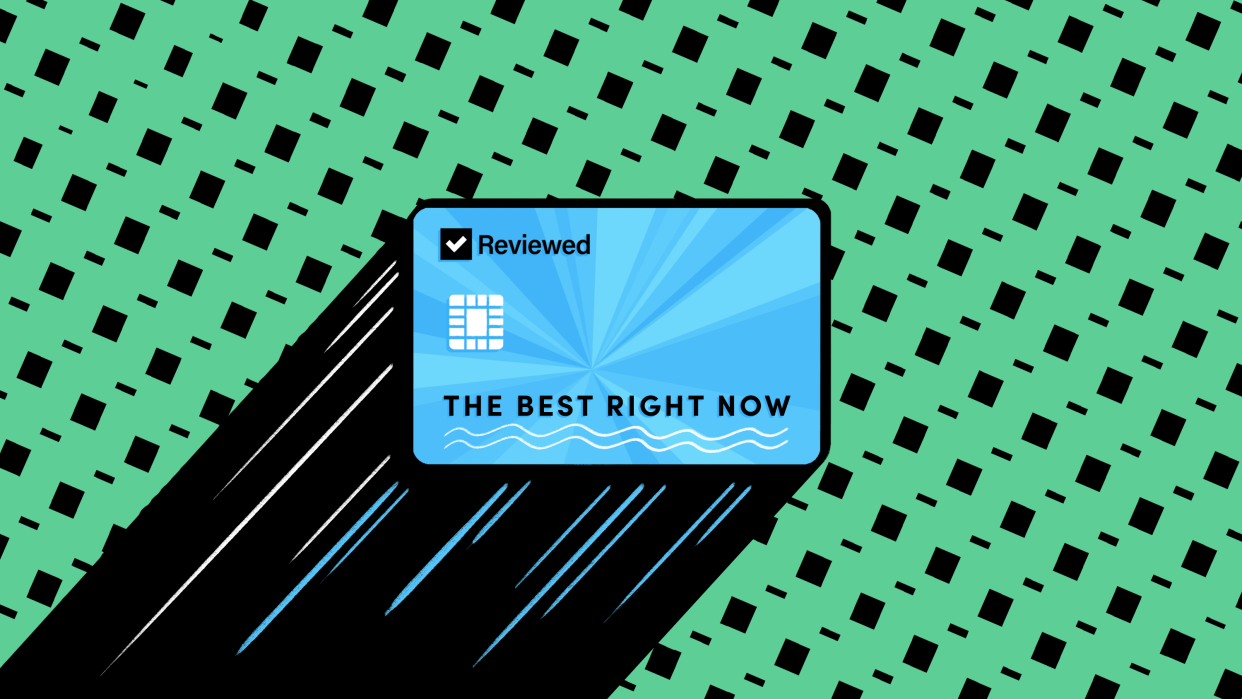
— Our editors review and recommend products to help you buy the stuff you need. If you sign up for a credit card after clicking one of our links, we may earn a small fee for referring you. However, our picks and opinions are independent from USA TODAY's newsroom and any business incentives.
Not sure what’s the best credit card for you? Don’t worry—we’re here to help you figure it out. Credit card issuers offer many options that can help you meet different goals.
If your goal is earning cash back without a lot of rules to follow, the Citi® Double Cash card lets you earn unlimited 1% cash back when you make a purchase and another 1% cash back when you pay it off. If you're a Prime member who shops on Amazon for most essentials (and also everything else), the Amazon Prime Rewards Visa Signature will help you earn 5% cash back each time you check out.
When comparing cards, you also want to look at the rates and fees, as various terms apply and can make one card better for you than another. For example, a card with a 0% APR balance transfer deal and a low balance transfer fee may be ideal if you want to pay off debt, whereas no foreign transaction fee may be the bigger priority when planning travel.
Reviewed’s experts compared rewards card terms to develop this short list of the top cards on the market. Here’s the best of the best!
The best credit cards of 2021
Best no-annual-fee credit card: Chase Freedom Flex
Best for unlimited cash back: Citi Double Cash
Best card for groceries: Blue Cash Preferred Card from American Express
Best secured credit card: Discover it Secured
Best travel credit card: Chase Sapphire Preferred Card
Best credit card with no foreign transaction fees: Chase Sapphire Reserve
Best credit card to save money: Capital One Quicksilver Cash Rewards Credit Card
Best business card: American Express® Business Gold Card
Best credit card for Amazon: Amazon Prime Rewards Visa Signature
What is the best credit card, you ask?
Well, in short, whatever works for you. But if you want a little more specific guidance when choosing a credit card, here are a few pointers.
Rewards credit cards should align with your spending habits. In other words, those of us who rely on public transportation likely don’t need gas perks. Take a look at your checking account to see if your bank breaks down where your money goes. Are your grocery bills a considerable amount? Are you a big entertainment spender? Or is your phone bill a good chunk of your spending? Those are the types of credit card rewards you should seek out.
If a credit card charges an annual fee, its benefits should outweigh the out-of-pocket cost. Generally, the more rewards the card has, the higher the fee. For instance, the Chase Sapphire Reserve will cost you $550 every year, but there’s an annual travel credit worth a few hundred dollars that knocks the price tag down. Not to mention, you’ll score premium travel perks, including complimentary airport lounge access. On the other hand, with a no-annual-fee credit card, any rewards you earn from your very first swipe is money in your pocket.
Some credit card issuers allow you to change your payment date; others do not. If choosing a particular time of the month will help you keep on top of your bills, be sure that’s an option. Late payments not only come with a fee, but affect your credit history, which is vital for everything from job applications to getting approved for a mortgage and even utilities. When all else fails, there’s always automatic payments.
Need help finding products? Sign up for our weekly newsletter. It’s free and you can unsubscribe at any time.
What is a good APR for a credit card?
Credit card annual percentage rates range from 13% to 25%, with the national average in January 2021 around 16%. Credit cards marketed for applicants with bad credit tend to be on the higher side, as do credit cards with rewards programs.
Before you apply for a credit card, you can see this range in the cardmember agreement. You won’t know the rate until you’re approved, as it’s determined by the issuer based on your creditworthiness. The higher your credit score, the lower the rate you can expect. Remember that with a variable rate, an issuer can change the interest it charges at any time—and, per your cardmember agreement, it may not have to notify you.
An issuer may charge a different APR for purchases, balance transfers and cash advances. It may even offer an introductory rate that includes zero interest for a period of 12 to 18 (or 21) months. Lastly, a penalty APR may kick in if you’re late for a payment, exceed your credit limit or break other terms and conditions laid out by the issuer.
We’ll say it till we’re blue in the face: Pay off your balance each month and you won’t have to think about interest.
How we evaluated
Our experts have covered credit cards and studied card benefits for years and have experience writing for outlets like The New York Times, Associated Press, Bankrate and The Points Guy. We looked at credit cards from major banks as well as cobranded cards from issuers like retail stores, airlines and hotels and evaluated our options to choose the best overall card in different situations.
Chase Freedom Flex
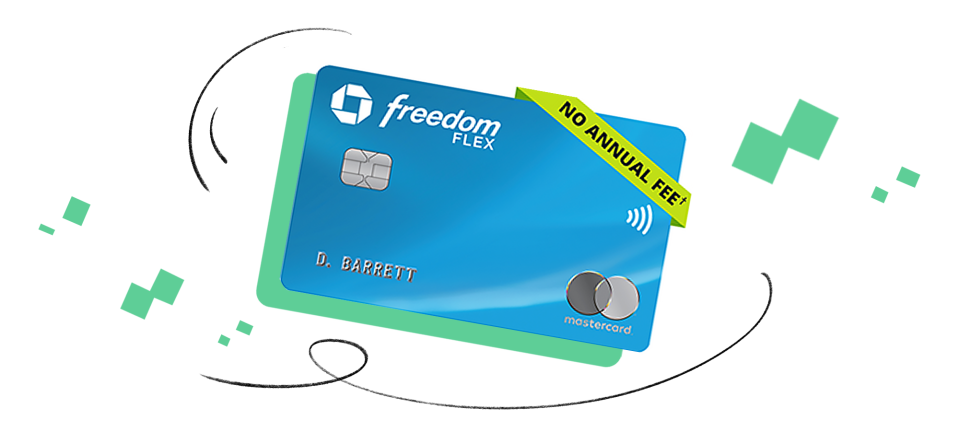
The Chase Freedom Flex is the latest credit card from Chase and it offers a combination of flat cash-back rates and a rotating bonus category, so you can have the best of both worlds. The best news: All of these big-time benefits come at no cost, which is why it’s our best credit card with no annual fee.
Points: All year round, cardholders earn 3% cash back on dining, including takeout and delivery orders from eligible services. You’ll also snag 3% on drugstore spending. Even better, travelers can earn 5% cash back when they book hotels, airfare, car rentals and more through Chase’s portal.
Additionally, there’s a 5% bonus category that changes each quarter, which Chase usually announces a few weeks in advance. It may focus on specific retailers such as Amazon or Walmart. Or, it might include areas like groceries, wholesalers or department stores. Just remember to activate the bonus category in order to grab the extra cash back, and take note that there’s a combined cap of $1,500 per quarter.
For all of your spending in between, you’ll earn 1%. All in all, not too shabby.
Perks: For the first 15 months, take advantage of 0% introductory APR on purchases (after which a variable rate between 14.99% and 23.74% applies). And through March 2022, get an additional 4% on rides with Lyft. Lastly, with Mastercard World Elite, you’ll score $10 every month you take at least five trips with the ride-share service.
There’s also a few built-in Chase benefits, like cell phone protection, which means if you pay your monthly bill with your card, you’re covered up to $1,000 per year should your device be stolen or damaged. It comes with extended warranty protection and trip cancellation/interruption insurance as well.
Learn more about the Chase Freedom Flex
Citi Double Cash
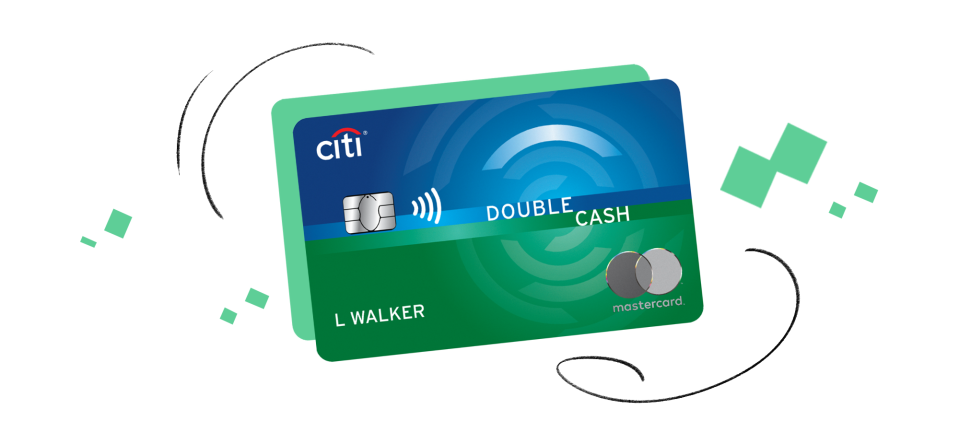
When it comes to unlimited cash-back credit cards, the standard rate is 1.5%. The Citi Double Cash card beats that at 2%, plus it makes redeeming points a breeze—a nice combination for those of us looking for a no-fuss rewards program. Oh, and there’s no annual fee.
Points: You’ll earn unlimited 1% cash back on your purchases when you swipe your card, and another 1% when you make your minimum payment on time. If you regularly pay your bills, this is a 2% cash-back card with no spending caps.
You can redeem cash back as ThankYou points to use in Citi’s rewards portal, or once you reach $25, as a statement credit, direct deposit or check.
Perks: Like most no-annual-fee credit cards, there’s not much in the way of extra benefits. At the moment, the Citi Double Cash card includes a balance transfer offer. While there is a balance transfer fee for any transactions you make within the first four months, there is a bit more wiggle room—18 months on balance transfers—to complete the payments.
Learn more about the Citi Double Cash
Blue Cash Preferred Card

These days, with the refrigerator mere feet from your makeshift work-from-home desk at the dining table, who isn’t spending a lot of money on groceries? The Blue Cash Preferred rewards you for your weekly errand, with a generous spending cap for the top rewards rate—a whopping 6%. For this reason, the Blue Cash Preferred is our best credit card for groceries. While there is a $95 annual fee, you can easily make up for it depending on your grocery budget. Plus some good news: AmEx is currently waiving it with a $0 introductory annual fee for the first year. As always, terms apply. See rates and fees.
Points: Each year, cardholders earn an impressive 6% back on up to $6,000 spent at U.S. supermarkets. Budget-wise, that works out to about $115 per week—after that, the rate drops to 1%. Just note that like most credit cards that reward grocery spending, the terms exclude wholesale clubs like BJ’s and Costco as well as superstores such as Target and Walmart—but if that’s where you regularly spend your money, we have some recommendations.
Beyond stocking your pantry, the Blue Cash Preferred rewards spending on select U.S. streaming services, with 6% cash back on payments to Apple Music, HBO Max, Netflix and other platforms that fuel your workout soundtracks and weekend TV marathons.
Cardholders also earn 3% on transit spending—think train fare, ride-shares and parking—and at U.S. gas stations, plus 1% on all other purchases. Cardholders can redeem cash-back as a statement credit.
Perks: The Blue Cash Preferred is a solid choice for its introductory APR offer. You can make interest-free purchases for 12 months, after which a variable interest rate (13.99% - 23.99%) kicks in. See rates and fees.
There’s also a few built-in AmEx perks, including car rental loss and damage protection, return protection and a Global Assist Hotline while you’re on the road.
Learn more about the Blue Cash Preferred
Discover it Secured

Some of us have made mistakes with credit cards and face a hard time getting approved for new accounts with bad credit. Or, we’re brand-new to credit altogether and find ourselves in the same pickle.
Enter Discover it Secured, one of the rare secured cards that will help you get your credit on track and offers a rewards program. While approved applicants need to put down a deposit equivalent to their credit limit—at least $200 or as much as $2,500—it is refundable. Plus, there’s no annual fee.
Points: Each quarter, cardholders earn 2% cash back on up to $1,000 at gas stations and restaurants—a potential annual return of $80 if you max out the spending cap. Everything else earns 1%.
Perks: Discover matches the cash-back you earn in the first year. Translation: Rack up $100 in rewards, and they’ll add another $100 on top of that.
After eight months, the issuer will review your account every billing cycle to see if you’re eligible to receive your security deposit back and upgrade to an unsecured card. You’ll also have access to your FICO score through the mobile app, your online account and monthly statements to track your progress as you build your credit.
You’ll get a pass on your first late payment, and won’t face a penalty APR. As always, we recommend paying your balance in full and on time every month—subsequent late payments incur a fee up to $40.
Learn more about the Discover it Secured
Chase Sapphire Preferred
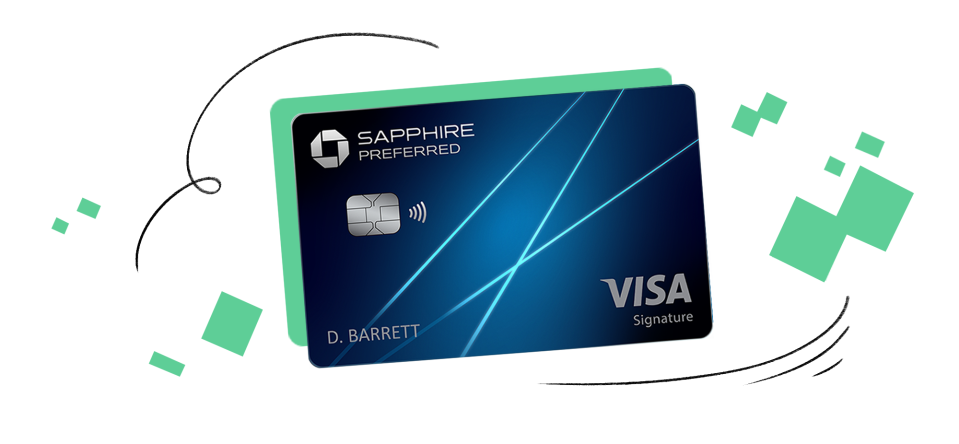
The Chase Sapphire Preferred Card is a solid pick whether you're big on staycations, plan to sightsee abroad, or love to cruise the seas. The card's top-tier benefits come with a $95 annual fee, plus there's a major sign-up bonus for new cardholders that will make you do a double take.
Points: The Sapphire Preferred card earns 2 Ultimate Rewards points per dollar spent on travel, or 5 points when booked through the Chase travel portal. Cardholders also earn 3 Ultimate Reward points for dining at restaurants, on takeout and with eligible delivery services, and that same rewards rate applies to online grocery orders (except at Target, Walmart and wholesale clubs). All other purchases bring in 1 Ultimate Reward point per dollar. Points can then be used to book hotels, cruises, car rentals, vacation rentals and more directly through Chase’s travel portal with a value of 1.25 cents per point ($0.0125).
For additional flexibility, points can be transferred—at the same value—to Ultimate Rewards partners, including programs with Hyatt and United Airlines. If you just want the cash back, Ultimate Rewards points can be redeemed for cash at a rate of 1 point for $0.01. So, those 10,000 points could cover a $125 night in a partner hotel, or could put a cool $100 back in your bank account.
Perks: The Sapphire Preferred has many great benefits in addition to how flexible the points are, and at the moment Chase offers a major sign-up bonus—its best ever—for new cardholders: Spend $4,000 within the first three months of account opening, and you'll earn 100,000 points. Yes, 100,000. That's a $1,000 statement credit or a whopping $1,250 if you book travel through the issuer's portal.
Year-round, it offers primary car rental insurance coverage, so you can avoid paying extra for insurance with the rental company. Primary means that if something happens to your rental car you won’t have to first make a claim with your own insurance policy.
For jet-setters out there, it also doesn’t charge foreign transaction fees for any trips you make abroad, which is key to save up to 3% on your purchases when you travel internationally.
Learn more about the Chase Sapphire Preferred
Chase Sapphire Reserve

If you travel abroad, you’ll save a lot on your trip if you have a credit card that doesn’t charge foreign transaction fees, and the Chase Sapphire Reserve is our top pick for this category. There is a $550 annual fee, however, the $300 annual travel credit, along with a few other perks, can make this card worth the cost.
Points: Chase created a proprietary reward system called Ultimate Reward points. The Sapphire Reserve card offers 3 Ultimate Rewards points per dollar spent on all travel and dining purchases after you receive your $300 travel credit, and 1 Ultimate Reward point per dollar spent on everything else.
The points can then be used to book hotels, cruises, car rentals, vacation rentals and tourist activities directly through Chase’s travel portal at a rate of 1.5 cents per point ($0.015). For additional flexibility, points can also be transferred to partners like Hyatt and United Airlines. Or for a rewards boost, travelers can use their card to book excursions through the Chase portal and rack up 10 points per dollar on dining, hotel stays, and car rentals, and 5 points per dollar on airfare.
Perks: The Chase Sapphire Reserve offers purchase protection (basically, insurance for your purchases) and extended warranty protection (to extend the manufacturer's warranty for items you purchase) that may come in handy when purchasing kitchen appliances, televisions, and other big-ticket items.
It also offers primary car rental insurance coverage up to $75,000 in physical damages or theft, meaning you don’t have to pay extra for the car rental company’s insurance, and if something happens to your rental car, you won’t have to make a claim to your own insurance policy first.
You’ll benefit from trip delay coverage, trip cancellation coverage, and lost and damaged baggage coverage. What’s more, the Sapphire Reserve offers a $300 annual travel credit, where the first $300 in travel purchases (from taxi fares to hotels to flights) made on your card each year will be refunded via a statement credit, effectively reducing the annual fee to $250.
As you’d expect with a premium travel card, You'll also receive a TSA PreCheck or Global Entry application fee credit (a $85 or $100 value) every four years, and a Priority Pass Select Membership, giving you access to more than 1,300 airport lounges across the world.
Learn more about the Chase Sapphire Reserve
Capital One Quicksilver Cash Rewards
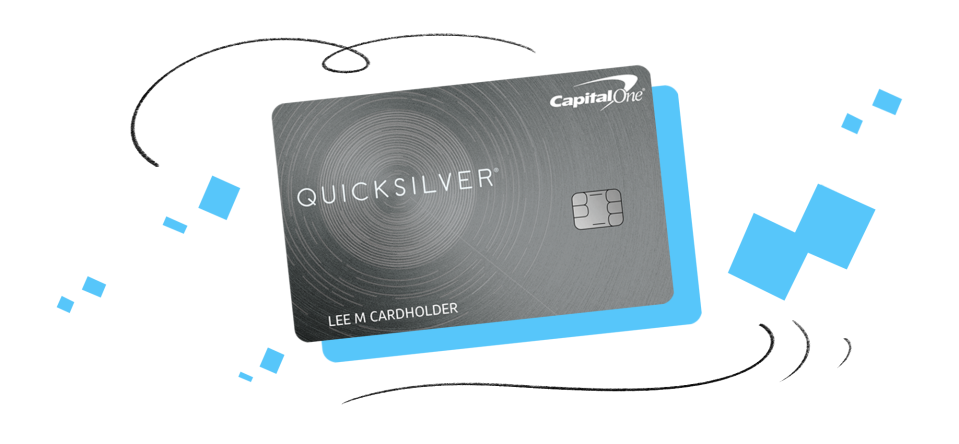
If you have a big purchase on the horizon, the Capital One Quicksilver Cash Rewards is a great pick to help you save money. There’s no annual fee on this card, which also comes with a long-term 0% APR introductory period and solid cash back rewards programs.
Points: The Capital One Quicksilver awards 1.5% cash back on all your purchases, no matter the vendor or price. So, if you buy a $1,000 item, you’ll receive $15 in points. And, because there’s no cap to the awards limit, collecting points can pay big dividends in the long term.
Perks: If you spend $500 in the first three months of the card, you’ll get a $200 cash bonus—a pretty good reward for simply spending money. Add that to an introductory 0% APR for purchases during the first 15 months, and that $1,000 item becomes fifteen $67 dollar monthly payments. Once the grace period expires, the APR hikes to between 14.99% and 24.99% based on your creditworthiness.
Learn more about the Capital One Quicksilver Cash Rewards
American Express Business Gold
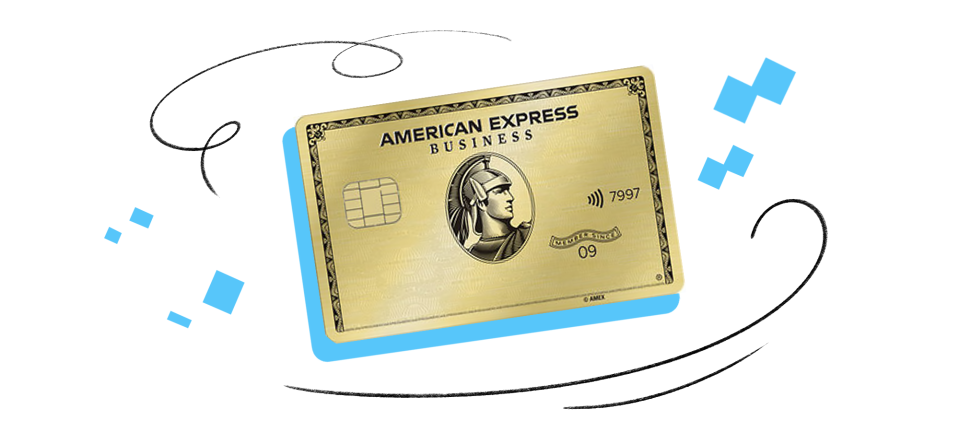
With a $295 annual fee, the American Express Business Gold Card can help you organize expenses and earn rewards for purchases you make to build your business. Keep in mind that terms and restrictions apply. See rates and fees.
Points: You’ll earn points on any employee cards you set up, for a number of expenses including travel, computer equipment, shipping and advertising, which could go a long way in helping you get your business off the ground.
Specifically, you’ll get 4X Membership Rewards points on up to $150,000 in combined purchases in two categories where your business spent the most each billing cycle. If your business spends $150,000 on, say, software and online advertising, the primary account will receive 600,000 points to spend in the Membership Rewards portal, or cash out into your bank account. After that, you'll earn 1 point per dollar spent.
Additionally, if you book flights using points at American Express Travel, you'll get 25% of them back.
Perks: You can earn a welcome offer of 70,000 Membership Rewards points after spending $10,000 within three months of account opening.
As far as expense management goes, the card allows you to set up employee cards with customizable spending limits, transfer data from your American Express online statement directly into your QuickBooks account and use a mobile app to add receipts and notes to transactions.
Learn more about the American Express Business Gold
Amazon Prime Rewards Visa Signature
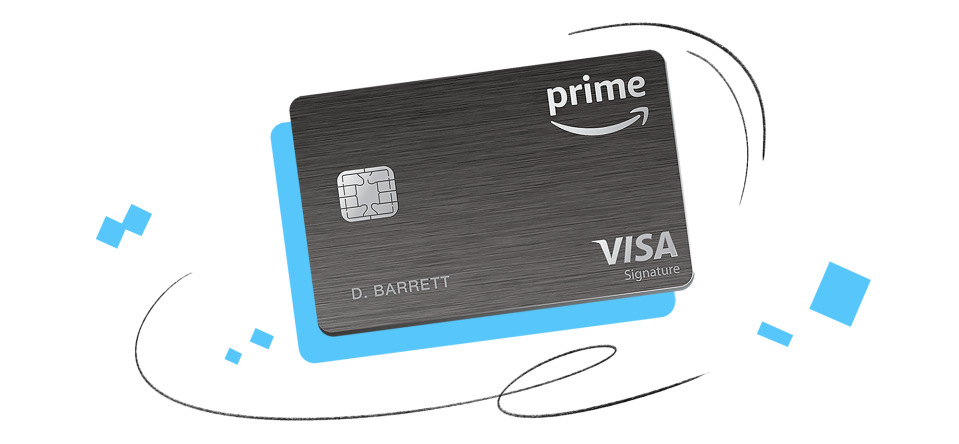
Facing a global pandemic, a lot of us turned to shopping on the internet. More specifically, we logged into Amazon. The e-commerce giant reported a huge surge in sales in a recent quarterly report as we tracked down toilet paper, hand sanitizer and just about everything else from the comfort of our homes.
If you’re a Prime member who already pays for perks like free two-day shipping and the site is your go-to for household essentials, groceries and everything in between—you might want to add the Amazon Prime credit card to your wallet, especially if you’re a regular shopper at your nearby Whole Foods.
Points: Eligible cardholders earn 5% cash back at Amazon and Whole Foods Market. For groceries, that includes shopping in-person, online orders with the supermarket chain and even Amazon Fresh. While a slightly lower rate than our best credit card for groceries, this one does not have a spending cap. (One thing to note: Should you cancel your Prime membership, the cash-back percentage will be reduced to 3% for this category.)
You’ll also rack up 2% on dining, gas and drugstore purchases. For other spending, you’ll earn 1%.
Perks: Travelers in particular may get some extra benefits out of this card. Take advantage of no foreign transaction fees, travel accident insurance and reimbursements for delayed or missing luggage.
Beyond that, cardholders also benefit from extended warranty protection and an auto rental collision damage waiver.
Learn more about the Amazon Prime credit card
Please note: The offers mentioned above are subject to change at any time and some may no longer be available.
Reviewed has partnered with CardRatings for our coverage of credit card products. Reviewed and CardRatings may receive a commission from card issuers.
See rates and fees for the Blue Cash Preferred Card from American Express. See rates and fees for the American Express Business Gold Card.
How does credit card interest work?
Despite the term “annual percentage rate,” credit card issuers calculate interest daily. The daily periodic rate is determined by dividing your APR by 365 days, which is then applied to your average daily balance. Crunch this number by adding up the total you carry each and every day of the billing cycle, and then dividing that by the number of days in the billing cycle.
Let’s say your card’s APR is 16%, and this month you carried an average daily balance of $2,000. The issuer first calculates the daily periodic rate (0.16 divided by 365). That rate (0.00043) is applied to your average balance (0.00043 x $2,000), which brings us to 0.87. Over the course of the 30-day billing cycle (0.87 x 30), you’ll pay $26.30 in interest.
If crunching numbers isn’t really your thing, some issuers include tools that calculate how much interest you’ll owe based on your monthly payment. Petal, for example, shares this information in a mobile app for its two credit cards.
Remember: You won’t be charged interest if you pay off your balance in full and on time each billing cycle. We get that life happens. So if on occasion that’s not possible, consider paying more than the minimum amount to lessen the interest you’ll pay over time, or make more than one payment during the billing cycle to lower your average balance.
How many credit cards should you have?
We hate to break it to you, but there’s no one-size-fits-all answer here. The right number of credit cards for you depends on what you can responsibly manage.
Does having a piece of shiny plastic an arm’s length away often encourage you to spend money you don’t have? You may want to think twice before applying for more credit. Carrying a balance you can’t afford contributes to interest charges, and in the long run costs you more money.
If you’re financially responsible and stick to making purchases that you can pay off, there may be some upsides to adding another card to your arsenal. For instance, if you’re a jetsetter without a card that rewards you for hitting the road, a travel card may make sense for you.
There are a few other things to consider before opening a new account, like adding a different payment processing network, or taking note of any annual fees.
How to cancel a credit card
Pay your outstanding balance and redeem any rewards. Then, call the issuer to confirm you have no balance, and ask to close your account. But before you pick up the phone, there are a few things to consider.
First, your score is based partly on the length of your credit history. Closing an older account will temporarily knock your score. If you’re applying for a mortgage in the near future—or anything else that may require a credit check—think twice about the timing.
Saying goodbye to a card also means you’ll have less credit available. And that means your utilization ratio will likely go up. (If you need a refresher: That’s the balance you carry divided by your credit line—and finance experts recommend keeping this at 30% or less.) Your utilization ratio is another major factor in calculating your score. In addition to being mindful of your balance, you can ask another issuer to increase your limit to help out a little.
Keep in mind, if you’re a responsible credit user, your score will eventually rebound. But there are a few other factors to consider when deciding to close an account, such as whether you’re close to hitting a rewards milestone.
Closing the account could still be the right move for you, especially if you’re tempted to spend money you don’t have, or you feel you already have too much credit at your disposal. In that case, call the issuer and then destroy your physical card.
In a month or two, check your credit report to confirm that the account has been closed at your request. Contact the issuer if it states otherwise.
What is a secured credit card?
Secured credit cards are geared toward those of us who have made mistakes with credit in the past, or those of us with limited credit histories. Students and people new to the U.S. often fall under these categories.
Unlike an unsecured credit card, cardholders are required to put down a security deposit—often around $200—that is typically equivalent to their credit line. There are, however, a few that require a smaller amount, including the Secured Mastercard from Capital One, which is among our best secured credit cards, as you may put down as little as $49.
Many credit card issuers will review your account after several months. If you’ve responsibly used your credit card, the issuer may consider upgrading your card or refunding your deposit.
How to build credit without a credit card
Revolving credit isn’t the only factor that impacts your score. Have student or car loans, or another type of installment loan? The lender likely reports your payments to the major credit bureaus, which impacts your score.
Consider taking out a credit-builder loan with a small bank or credit union. This type of installment loan will add to your credit mix—one factor that affects scores—and making on-time payments gives it a boost, too.
Even though your credit score can affect your utilities, your utility payments are not reported to credit bureaus. We don’t make the rules! There are some services, such as LevelCredit and RentTrack, that will report your utility and rent payments to the credit bureau to give you credit for your timeliness.
There are other tools, like Experian Boost, that may make sense for you. It taps your phone and utility payments—and even your Netflix subscription—to nudge your score a bit. According to the credit bureau, users who sign up for the service see an average jump of 13 points in their FICO scores.
Other top credit card options
The product experts at Reviewed have all your shopping needs covered. Follow Reviewed on Facebook, Twitter, and Instagram for the latest, deals, product reviews, and more.
This article originally appeared on Reviewed: The best credit cards of 2021: Reviewed

